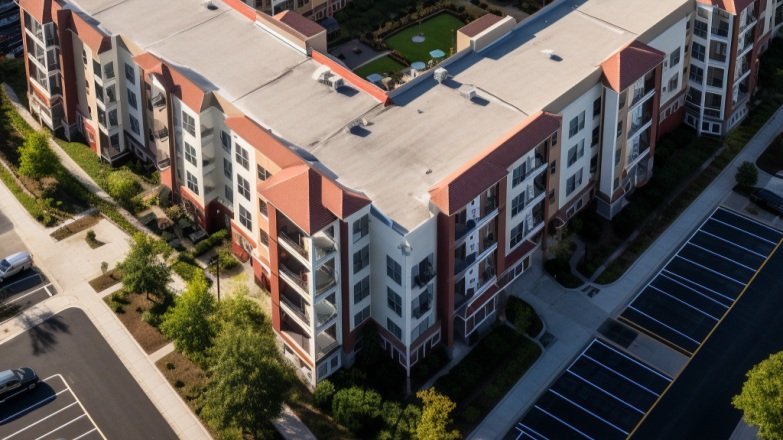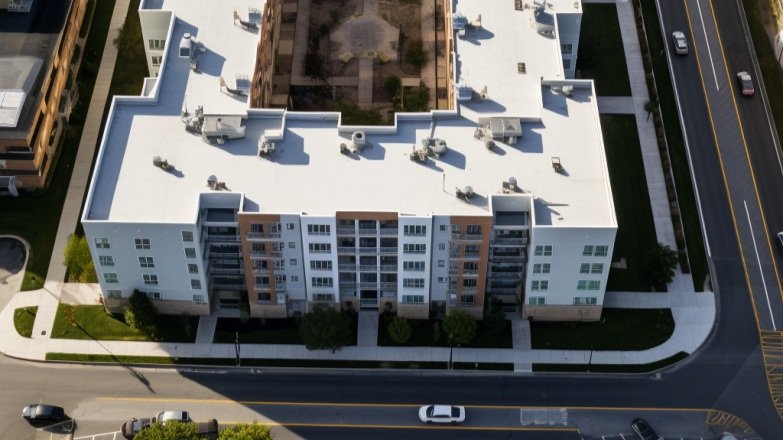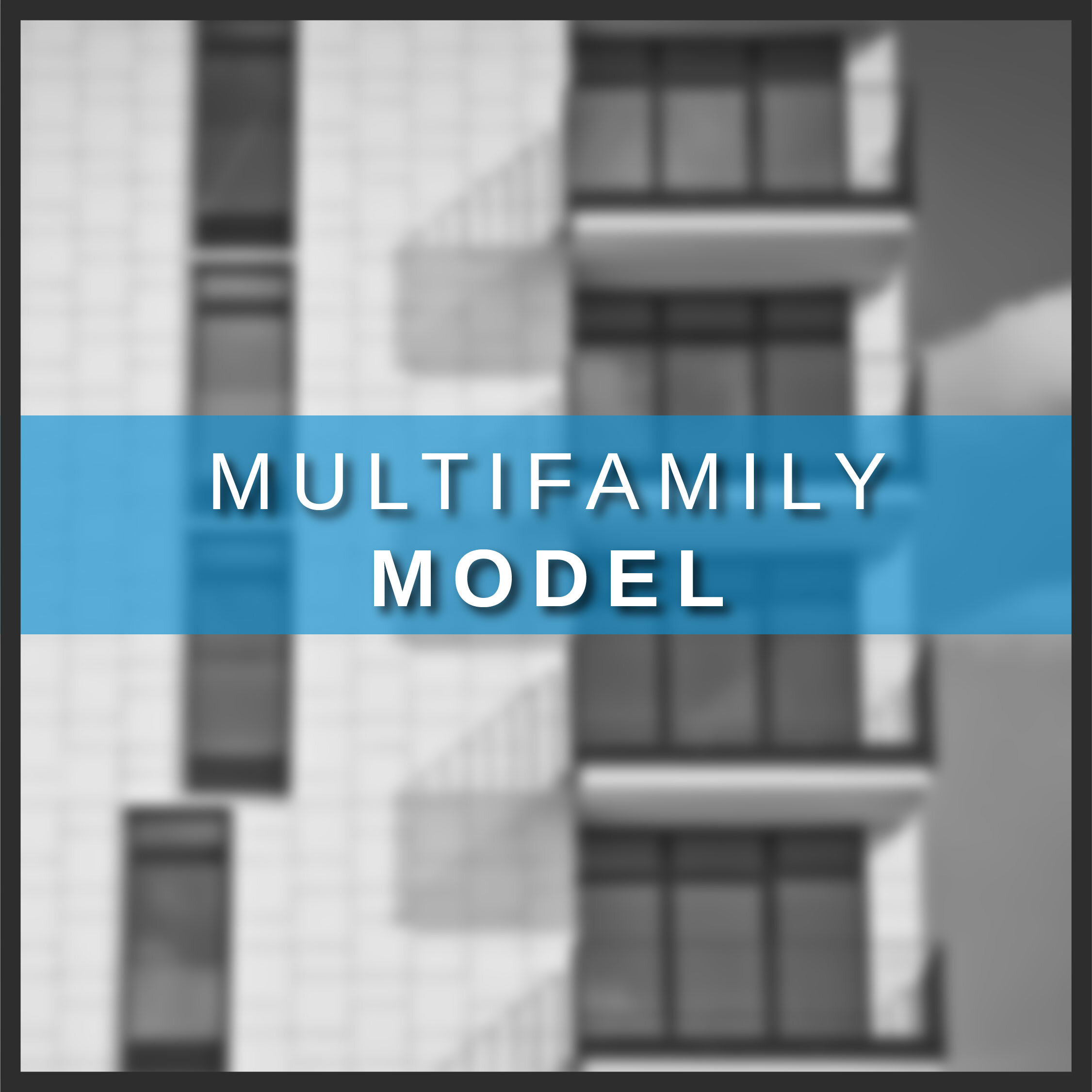How Does Affordable Housing Work?
Affordable housing is a critical aspect of any community, providing safe and affordable homes to individuals and families with lower incomes.
This step-by-step guide will walk you through the entire process of how affordable housing works, from its definition and eligibility criteria to the application process and tenant selection.
Whether you are a potential tenant seeking affordable housing or simply curious about this important sector, this guide will provide you with a solid understanding of the affordable housing system.
In this article, we’ll cover:
What Is Affordable Housing?
Affordable housing refers to housing options that are available to individuals and families with lower incomes at prices below the market rate. The primary objective of affordable housing is to provide safe and decent housing that is affordable for those who may struggle to find suitable accommodations within their budget.
These programs play a crucial role in addressing housing inequality and ensuring that people have access to adequate shelter and the opportunity to build stable communities, especially as housing becomes more and more expensive.
Types of Affordable Housing:
Low-Income Housing Tax Credit (LIHTC) Properties: These properties are developed through the LIHTC program, which offers tax credits to developers as an incentive to build affordable housing. These credits are then sold to investors to raise funds for construction and maintenance, allowing developers to offer reduced rents.
Section 8 Housing: This program, administered by the U.S. Department of Housing and Urban Development (HUD), provides rental assistance to eligible low-income tenants. Section 8 vouchers allow tenants to find housing in the private rental market, and the government subsidizes a portion of their rent.
Public Housing: Public housing developments are owned and operated by local housing authorities or other government agencies. They offer housing options for low-income families and individuals, with rents set based on income levels.
Nonprofit and Community-Based Housing: Nonprofit organizations and community-based developers often create affordable housing projects through a mix of government subsidies, grants, and private donations. These projects are focused on serving specific communities and meeting the unique needs of the residents.
Inclusionary Zoning: Some cities and municipalities implement inclusionary zoning policies, requiring developers to include a certain percentage of affordable housing units in their new developments. This ensures that affordable housing is integrated into mixed-income neighborhoods.
Cooperative Housing: Cooperative housing involves residents collectively owning and managing a housing complex. This model can be more affordable than traditional rental housing, as residents share ownership and decision-making responsibilities.
Rent Control: In some parts of the country, rent control policies limit the amount landlords can increase rent for certain units. This program aims to protect tenants from drastic rent hikes, helping to maintain affordable housing options.
Affordable Homeownership Programs: These initiatives support low-income individuals and families in becoming homeowners by providing financial assistance, down payment assistance, or subsidized mortgage rates.
Manufactured Housing: Manufactured homes, also known as mobile homes, are a more affordable housing option for many due to the simplicity of their construction. They are factory-built and can be placed on rented or owned land.
Accessory Dwelling Units (ADUs): ADUs, also known as granny flats or in-law suites, are secondary housing units built on the same property as a primary residence. They can offer affordable rental options for tenants and additional income for homeowners.
2. Government Incentives for Affordable Housing Programs
Governments at the federal, state, and local levels provide various incentives to encourage the creation and development of affordable housing projects.
These incentives are designed to attract developers and investors to participate in affordable housing initiatives and address the housing needs of low-income individuals and families.
Without these incentives, developing and building affordable housing projects would be nearly impossible. When builders have to pay market rates for land, development, and construction of the site, the only way for them to seek a return on their risk and investment is to aim for market rates. However, these incentives help bridge that gap to create a more affordable option for the residents.
Some Common Affordable Housing Incentives Include:
Low-Income Housing Tax Credits (LIHTC): LIHTC is one of the most significant incentives offered by the federal government to support affordable housing development. Developers can apply for and receive tax credits, which they can then sell to investors to raise capital for their projects. These tax credits can be incredibly difficult to receive due to competition and limited funding, but they reduce the overall tax liability of investors and make affordable housing projects more financially viable.
Housing Choice Vouchers (Section 8): The Section 8 program, administered by the U.S. Department of Housing and Urban Development (HUD), provides rental assistance to qualifying low-income tenants. Property owners who participate in the Section 8 program receive rental subsidies, ensuring a stable source of income and reducing the risk of tenant vacancies.
Low-Interest Loans and Grants: Governments have some programs that offer developers lower-interest loans or even grants to help finance the construction or renovation of affordable housing projects. These financial resources can significantly reduce the cost of borrowing funds and make the projects more economically feasible.
Density Bonuses and Zoning Incentives: Some municipalities provide density bonuses or zoning incentives to developers who include a certain percentage of affordable housing units in their projects, which we recently saw here in Nashville on a larger scale project from Tony Giarratana. This allows developers to build more units than typically permitted, increasing the overall financial viability of the development.
Expedited Permitting and Streamlined Approval Processes: Governments may expedite the permitting and approval processes for affordable housing projects, reducing the time and cost required for development. This process can be an attractive incentive for developers in major metropolitan areas, like Nashville, where permitting and approvals for development and construction can take many months of even years.
Tax Abatements: Tax abatements allow developers to postpone or reduce property taxes for a specified period. This incentive can ease the financial burden during the early stages of development when the property is under construction and going through stabilization.
Land Use Assistance: Local governments may offer assistance in identifying suitable land for affordable housing projects or even offering rezoning incentives for the right project. They may also provide access to surplus government-owned land or offer it at discounted prices in order to achieve the highest and best use for housing within the city.
Impact Fee Reductions: Governments may reduce or waive impact fees, which are charges imposed on developers to mitigate the effects of new developments on public infrastructure. Since the developers are essentially building public infrastructure (or at least a project that will benefit the public), the municipalities may be willing to waive these penalties.
Supportive Services Funding: In addition to financial incentives, governments may allocate funding for supportive services, such as counseling, job training, or childcare, to enhance the well-being of affordable housing residents. There are many wonderful programs available now to assist residents along their housing journeys.
Preservation Incentives: Incentives may be offered to encourage the preservation and rehabilitation of existing affordable housing properties to maintain their affordability and prevent displacement. Many affordable housing projects are only affordable for a period of 15 to 20 years, at which point they can be converted to market rate housing, so local authorities are incentivized to work with developers and investors to keep this housing stock.
You’ll notice that the development and construction of affordable housing largely falls upon the “financial or economic viability” of the projects. Since developers are often for-profit entities and development is a capital and risk intensive venture, the best way to land a successful affordable project is through a public-private partnership.
Many affordable developers will use a combination of the incentives above in order to make these deals work and the capital stacks (the sources and uses of funds for the development and construction) can be quite diverse.
Overall, these government incentives play a critically important role in stimulating the development of affordable housing projects, supporting the creation of stable and sustainable communities for individuals and families with lower incomes.
3. Who Qualifies for Affordable Housing in the US?
Income eligibility for affordable housing varies depending on the specific affordable housing program and location. Generally, affordable housing is designed to assist individuals and families with low to moderate incomes.
The income limits are set by the Department of Housing and Urban Development (HUD) or other local housing authorities and are based on the Area Median Income (AMI) for a particular area. AMI is the midpoint of all household incomes in a given area.
Application Process for Affordable Housing:
Determine Eligibility: Applicants must first determine if they meet the income eligibility requirements for the specific affordable housing program. This may involve calculating their household income and comparing it to the AMI for the area. How to determine your Area Median Income
Find Affordable Housing Opportunities: Applicants can search for available affordable housing units through various channels, such as local housing authorities, nonprofit organizations, and online listing websites.
Complete the Application: Once a suitable affordable housing unit is found, the applicant must complete the application. The application will require information about the applicant's income, family size, and other relevant details.
Provide Supporting Documentation: Applicants are usually required to provide supporting documents, such as pay stubs, tax returns, and proof of residency, to verify their income and eligibility.
Wait for Approval: After submitting the application, applicants must wait for the housing authority or property manager to review their application and determine if they meet the income eligibility and other criteria for the program.
Notification of Acceptance: If the application is approved, the applicant will receive a notification of acceptance, and they will be offered the opportunity to lease the affordable housing unit.
Lease Agreement: Once accepted, the applicant will sign a lease agreement, which outlines the terms and conditions of the tenancy, including the rent amount, lease duration, and other rules.
It's important to note that the demand for affordable housing often exceeds the supply with waitlists averaging around 2.5 years, so the application process can be competitive.
Additionally, different affordable housing programs may have specific preferences or priorities, such as giving priority to households with children, seniors, or individuals with disabilities. Therefore, it's essential for applicants to stay informed about the application process and any updates or changes to income eligibility criteria.
4. Creating Affordable Housing
The investment and development process of affordable housing involves several key steps to create housing that is both financially viable and accessible to low to moderate-income individuals and families.
I will note that each of these steps can be done simultaneously or in slightly varying orders, but this section will give you a good overview of the process:
Feasibility Study: Developers start by conducting a feasibility study to assess the viability of an affordable housing project within a certain geographic area. This study evaluates factors such as the demand for affordable housing in the area, the availability of funding and subsidies, potential sites, and estimated development costs. This phase can take several months to a year, depending on the complexity of the study and the availability of suitable sites.
Site Selection: Once the feasibility study indicates that the project is viable, developers search for suitable sites to build affordable housing. The site should be located in an area where there is a demand for affordable housing, access to public transportation, and proximity to essential amenities like schools, healthcare facilities, and stores.
Securing Financing: Financing is a critical aspect of affordable housing development. Developers typically combine various funding sources, including government grants, low-income housing tax credits (LIHTCs), private equity, and loans. They may partner with investors or affordable housing organizations to secure the necessary funds. It may take several months to a year to secure all the necessary funding.
Design and Planning: The next step involves the design and planning of the affordable housing project. Architects and urban planners work to create a development that meets the needs of the target population, adheres to building codes and regulations, and maximizes the use of available resources. This phase can take around six months to a year, depending on the complexity of the project and the need for approvals.
Obtaining Approvals and Permits: Developers must obtain the necessary approvals and permits from local authorities to proceed with the construction of the affordable housing project. This process includes obtaining zoning approvals, environmental clearances, and building permits. This phase can take several months to a year, depending on the local regulatory and permitting processes.
Construction: Once all approvals are in place, construction of the affordable housing project begins. Developers work with contractors and construction teams to bring the project to fruition. The duration of the construction phase can vary depending on the size of the project and other factors, but it typically takes around one to two years to complete the construction.
Property Management: After the completion of the affordable housing development, property management teams take charge of the day-to-day operations. They ensure that the housing units are well-maintained, manage tenant applications and screenings, collect rents, and handle maintenance issues. The rent-up phase can take several months to a year, depending on the demand for affordable housing in the area - I’ve even seen some projects delivered at 100% occupancy because of demand.
Rent and Affordability Monitoring: Affordable housing properties are subject to rent and affordability restrictions. Developers and property managers must adhere to these regulations, ensuring that the units remain affordable for eligible residents over time.
Resident Selection: To qualify for affordable housing, prospective tenants must meet income and other eligibility criteria. Property managers carefully screen applicants and select tenants who meet the income requirements and other program guidelines.
Compliance and Reporting: Developers and property managers must comply with reporting requirements for the various funding sources and government programs used in the project. They are required to provide periodic reports to ensure ongoing compliance with affordability regulations.
The investment and development process of affordable housing requires collaboration between developers, investors, government agencies, and property management teams to create housing that meets the needs of the community while remaining financially sustainable.
The time it takes to develop and build an affordable housing project can vary significantly depending on various factors, including the size and complexity of the project, the availability of funding, the site selection process, and the local permitting and approval timelines. Generally, the development timeline for affordable housing projects can range from two to five years.
If you’re purchasing multifamily real estate, this spreadsheet is the underwriting tool to ensure you’re making the most informed decision possible.
Our go-to underwriting software for office, retail, and industrial real estate investments.










If you’ve been investing for a while, you know the grind.
You’ve closed deals, managed contractors, worked through leases, and seen both wins and setbacks. Maybe you’ve owned single-family rentals, a few duplexes, or even some small commercial buildings. You understand the fundamentals: how to run numbers, navigate debt, and keep properties occupied.
But here’s a question that hits at a different level: are your investments giving you leverage or just more responsibility?
As your portfolio grows, so does the complexity. More tenants often mean more phone calls. Bigger buildings bring additional systems, staff, and liability. And while your equity might be growing on paper, your time can get stretched thin across too many directions.
That’s why more experienced investors are quietly shifting toward asset classes that offer something rare in commercial real estate: simplicity that still delivers strong returns.
Two of the most overlooked categories in this space are flex industrial and industrial outdoor storage (IOS).
They’re not flashy. You won’t find them in luxury investor decks or high-end brochures. But these properties produce solid returns, attract long-term tenants, and are surprisingly light on operational headaches. Best of all, they give seasoned investors a way to keep growing without being consumed by the demands of their portfolio.
In this post, we’ll walk through:
What makes flex and IOS so attractive
The numbers behind why they work
How they fit into a growing portfolio
And why they might be the most strategic asset class you haven’t explored yet
This is not about going bigger for the sake of scale. It’s about going smarter.
Because the goal is not more units. It’s more freedom.